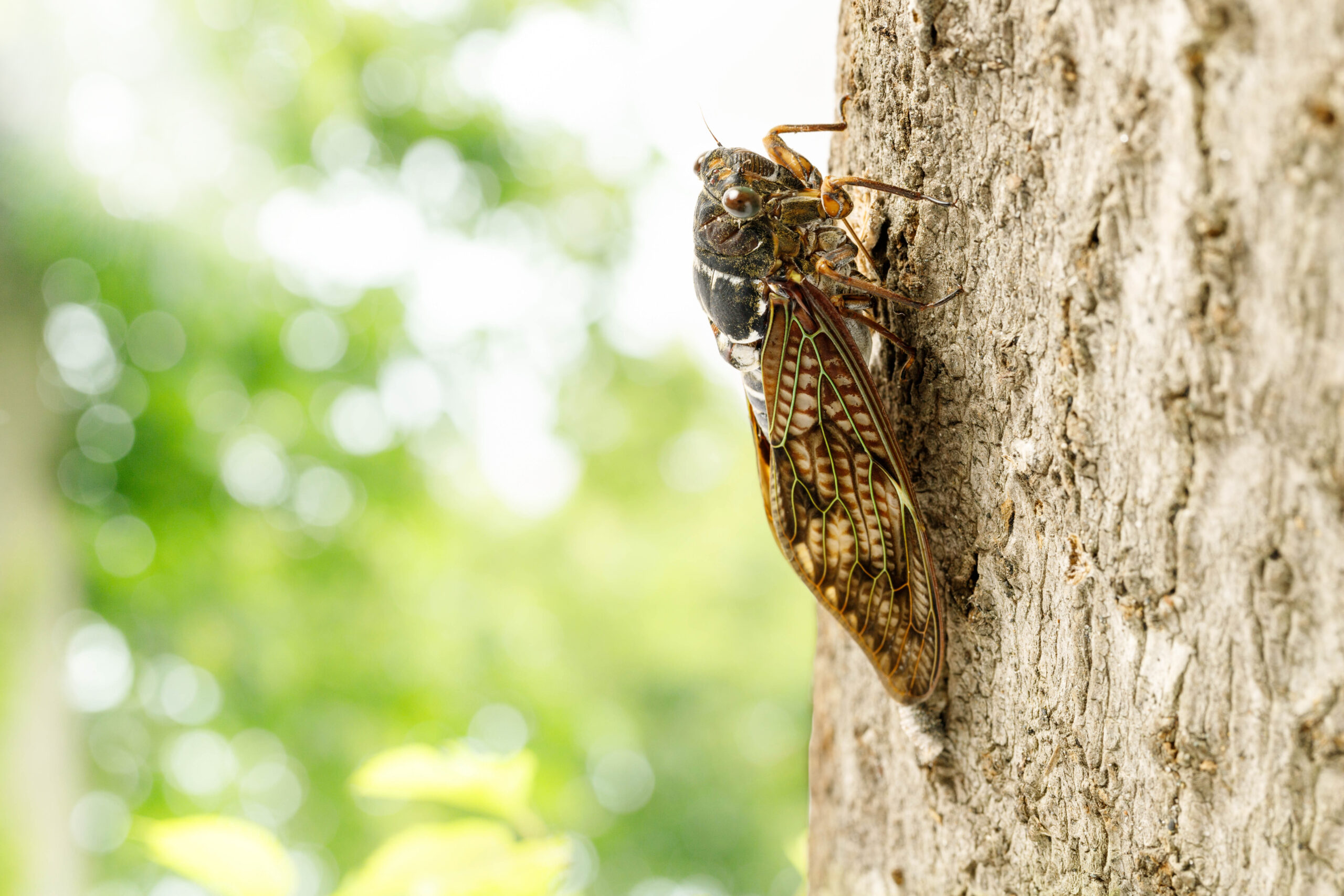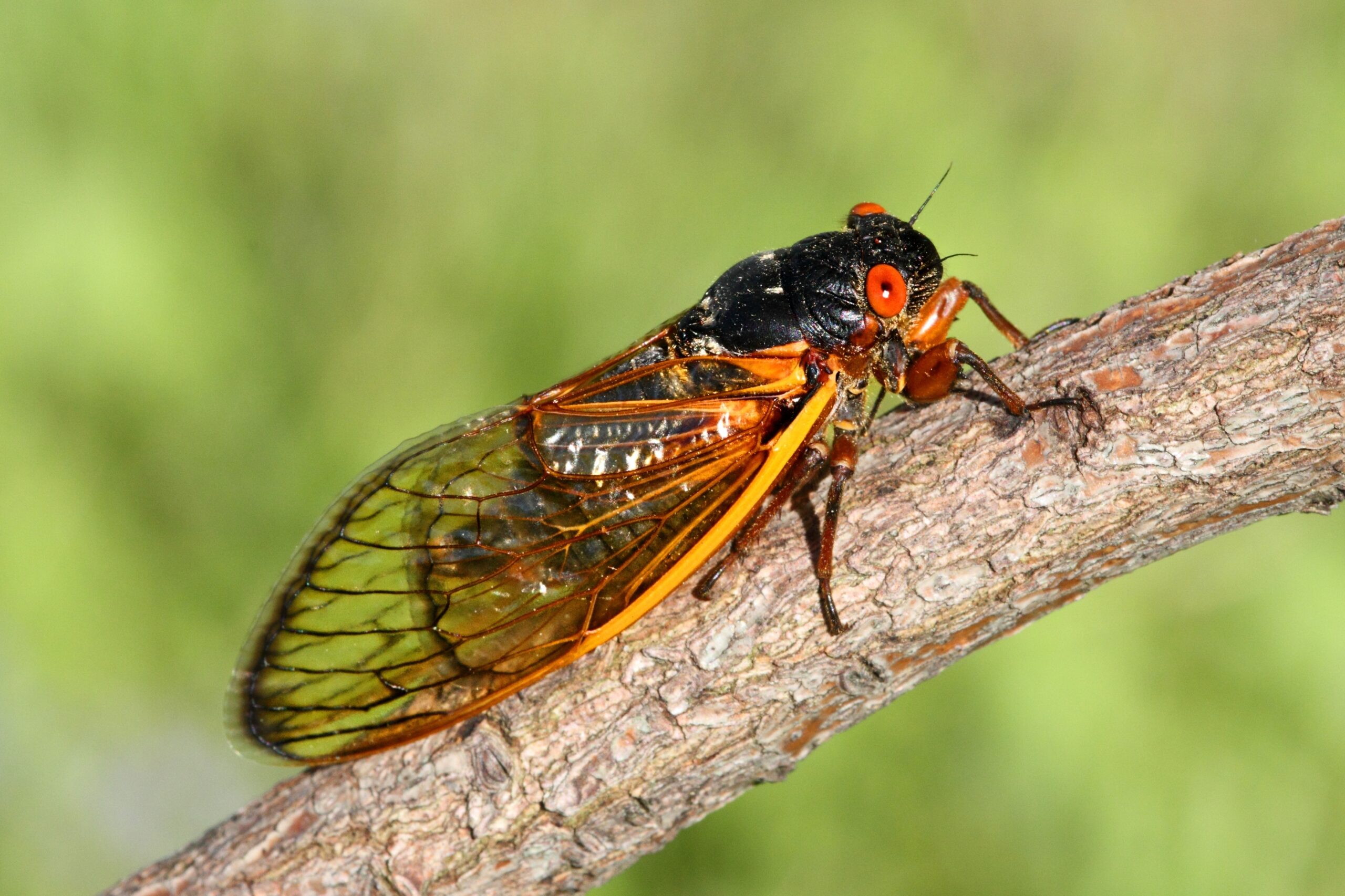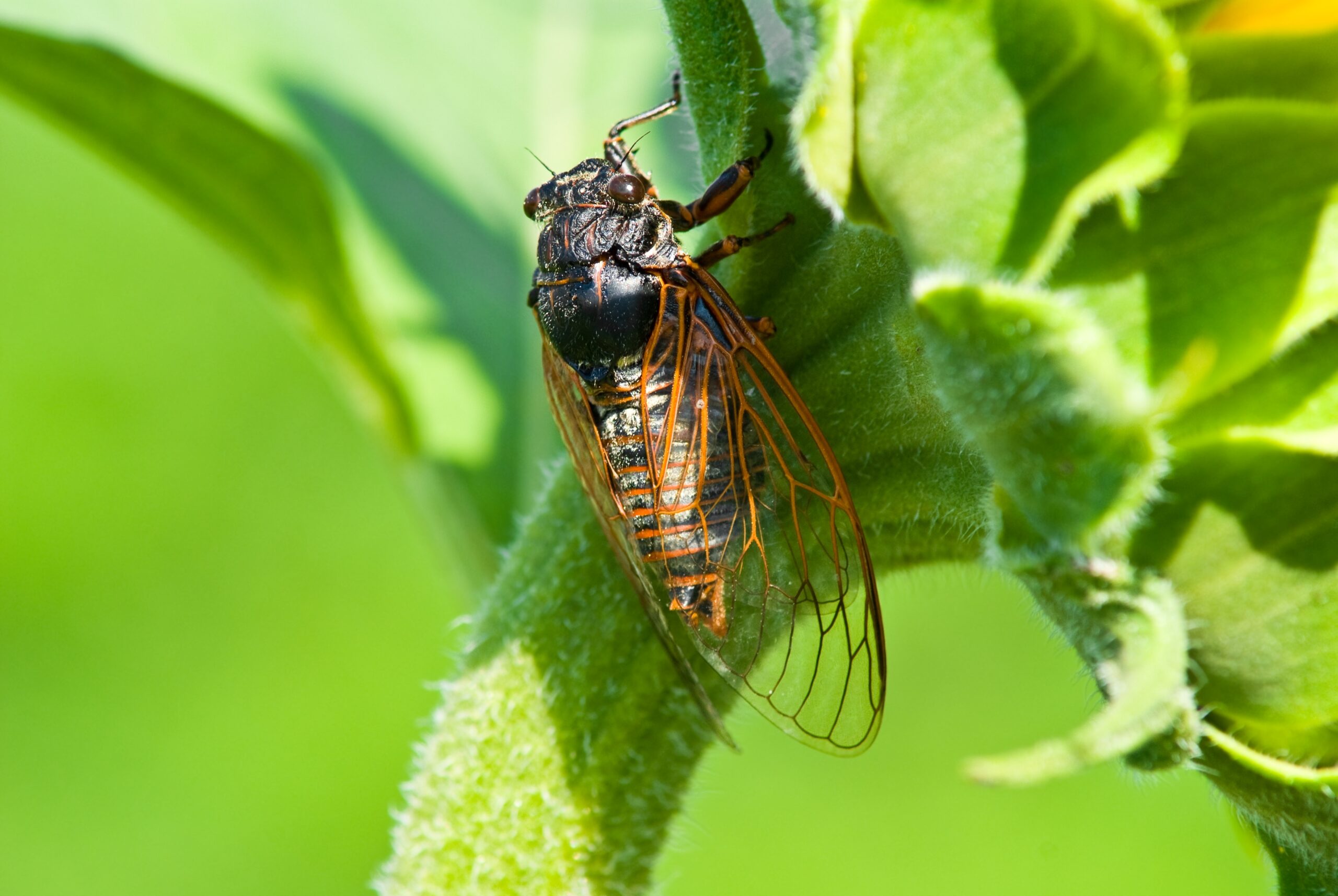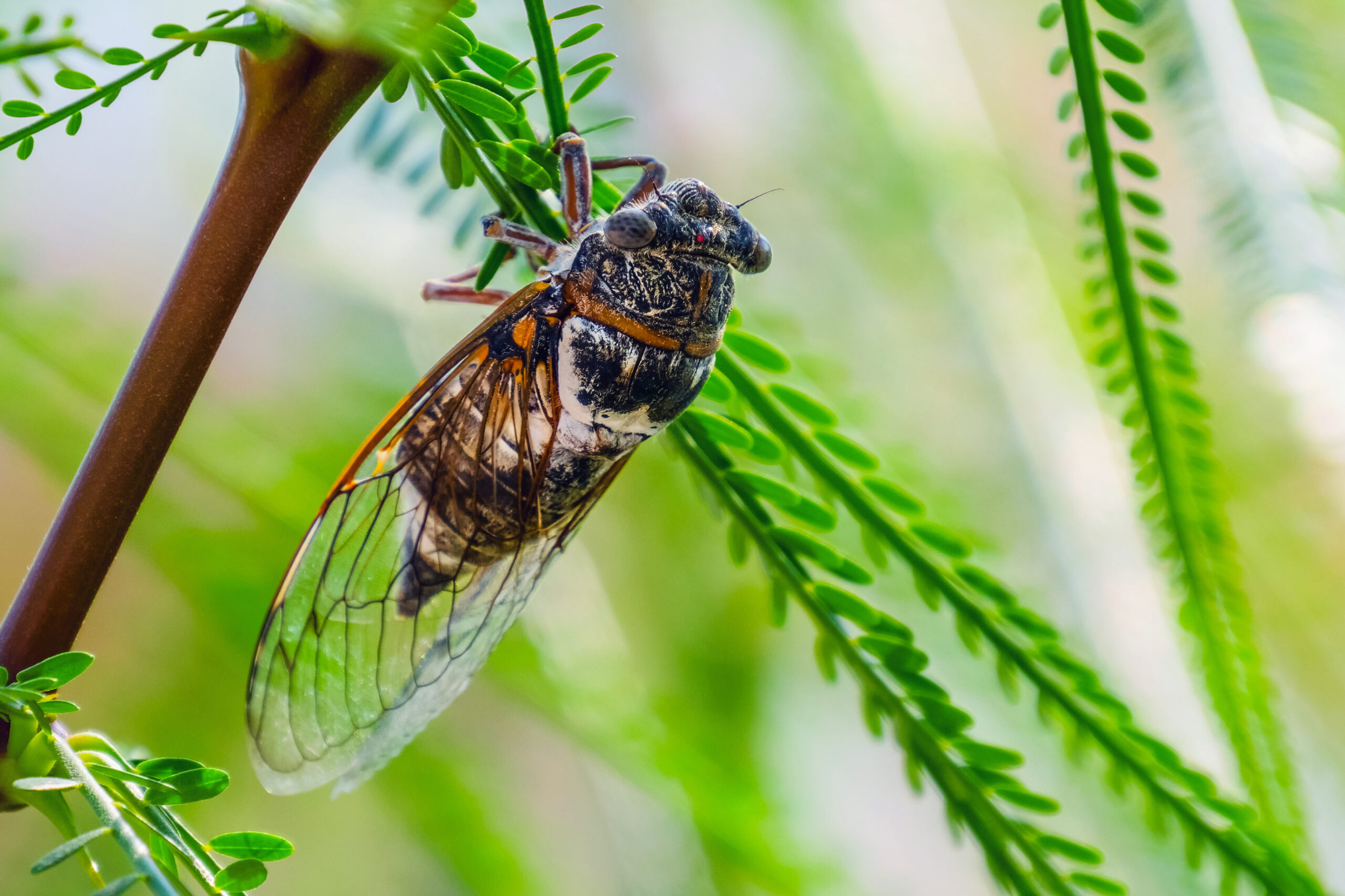Illinois Cicadas Use What To Defend Themselves?!
Illinois Cicadas Use What To Defend Themselves?!
It’s time to discuss one of the most unnerving natural events to occur in the Midwest: cicada emergences. In 2024, it’s estimated that billions of cicadas will emerge over the course of a few months. Two broods are synchronized for the first time this century, hence the unimaginable numbers of cicadas popping out from the ground this spring. But there is one more aspect of cicadas that makes their presence even more unnerving, and we’re not talking about their screeching calls.
Let’s discuss how the cicada’s strong urine streams —yes, you read that right — protect them from potential predators, then examine the strange lives of these occasional pests.
Record-Holding Streams
Cicadas use every tool at their disposal to keep predators at bay. They don’t have a painful bite or dangerous venom, so cicadas rely on their strong urine stream to discourage hungry enemies. In fact, these insects hold the record for the strongest stream relative to their size! Cicadas have an average stream velocity of 3 meters per second. This is enough to stun a predator but not enough to kill them, so cicadas still have to make a quick escape.
One of the reasons why cicadas are able to urinate so forcefully is because they only consume xylem, a thick plant sap. They drink about 300 times their weight in xylem every day, starting when they’re nymphs that need the sap to bulk up. Since xylem has few nutrients and is difficult for insects to pass, cicadas use fluidic jets to shoot their urine at enemies. This method actually uses less energy than how insects usually produce waste, so cicadas have more energy to spend on other activities.
The Basic Facts
Anyone who spends enough time in the cicada-populated areas is all too familiar with these strange pests, but it’s still helpful to discuss the basics. One of the most essential facts to note is that cicadas are harmless to humans and pets (unless your dog eats a lot of them). They don’t bite, sting, or spread diseases. They also can’t be controlled with standard pesticides since — like roaches — cicadas are immune to the traditional treatments.
Most of the cicada’s life is spent underground as a growing nymph, only to emerge as an adult in time for mating season. Adult cicadas are about 1 inch long and have a wingspan of 3 inches. Once they find a mate — after screaming in search of one — female cicadas lay eggs on tree branches. The eggs will fall and burrow under the soil, only to drink xylem for the next several years. As for the adults, they’ll die 4 to 6 weeks after emerging from the dirt. But their short lives are not in vain, as they help the ecosystem by eating the sap and returning it to the soil once they expire.
Emergence Activities
The timing of a major cicada emergence completely depends on the temperature of the soil. Once it reaches about 64° Fahrenheit, the soil is warm enough for cicadas to break free and find a nearby tree while they call for a mate. This usually happens in late May because the outdoor temperature is on the rise during our march towards summer.
These types of cicadas are called periodical cicadas. They are small and harmless, but they produce quite the noise once they’re out of the soil. The constant humming sound that cicadas produce is their method of communication. Its primary purpose is to locate a mate, but their hum is also useful in communicating with nearby cicadas. This sound is produced when the cicada expands and contracts its tymbal (a membrane) to make a steady hum that can be heard by anyone in the area.
The Great Emergence of 2024
7 species of periodical cicadas live in the U.S., and they typically emerge where they have before. For example, if you saw quite a few cicadas popping up in your backyard in previous years, they will likely reappear there in a future emergence. Luckily for us (note the sarcastic tone), the primary site for this emergence happens to be Illinois.
There are two specific broods of cicadas that are simultaneously emerging this spring for the first time since 1803: Brood XIII and Brood XIX. You can find all kinds of resources on this year’s cicada emergence, so it’s a good idea to research before these creatures break out of the ground.
Some things to note about Brood XIII:
- Also called the Northern Illinois Brood
- The largest emergence of cicadas
- Underground for 17 years
- Emerging in Illinois, Ohio, Michigan, and Wisconsin
Some things to note about Brood XIX:
- Also called the Great Southern Brood
- The loudest, most densely-populated group
- Underground for 13 years
- Emerging in Illinois, Alabama, Arkansas, Georgia, Indiana, Kentucky, Louisiana, Maryland, Missouri, Mississippi, North Carolina, Oklahoma, South Carolina, Tennessee, and Virginia
Pointe Protects Against Pests Large And Small
The good news about the endless cicadas coming for Illinois is that these pests aren’t dangerous. They don’t even want to invade our homes because they need to lay their eggs on the trees outside! However, other pests are not on the same page as cicadas and are constantly trying to get inside our homes and businesses. That’s why Pointe Pest Control provides year-round pest protection for both residential and commercial properties. Our team is fully licensed and experienced in treating invasive pests, eliminating infestations, and preventing them from returning. Contact us to learn more about how our effective treatments will protect your space from persistent pests!
Citations
Arnold, J. (2024, January 23). Bugging out: Billions of cicadas from 2 broods to arrive in IL. Patch. Available at https://patch.com/illinois/across-il/bugging-out-billions-cicadas-2-broods-arrive-il-may (Accessed on March 15, 2024).
Bartels, M. (2024, March 11). A double emergence of periodical cicadas isn’t cicada-geddon — It’s a marvel. Scientific American. Available at https://www.scientificamerican.com/article/a-double-brood-of-periodical-cicadas-will-emerge-in-2024/ (Accessed on March 15, 2024).
Billions of cicadas will emerge in the US this year in a rare double-brood event. NBC5 Chicago. Available at https://www.nbcchicago.com/news/national-international/billions-of-cicadas-will-emerge-in-the-us-this-year-in-a-rare-double-brood-event/3333109/ (Accessed on March 15, 2024).
Challita, E.J. and Bhamla, M.S. (2024, March 11). Unifying fluidic excretion across life form cicadas to elephants. PNAS. Available at https://www.pnas.org/doi/10.1073/pnas.2317878121 (Accessed on March 15, 2024).
Schier, A. (2024, March 12). Billions of cicadas could squirt pee at you when insects emerge in IL. Patch. Available at https://patch.com/illinois/across-il/billions-cicadas-could-squirt-pee-you-when-insects-emerge-il (Accessed on March 15, 2024).
Will you have to watch for cicada pee this spring and summer? An expert weighs in. (2024, March 8). NBC5 Chicago. Available at https://www.nbcchicago.com/news/local/do-cicadas-pee-what-to-know-ahead-of-historic-emergence-illinois/3378007/ (Accessed on March 15, 2024).
Request a Free Quote Today
(We do not share your data with anybody, and only use it for its intended purpose)






